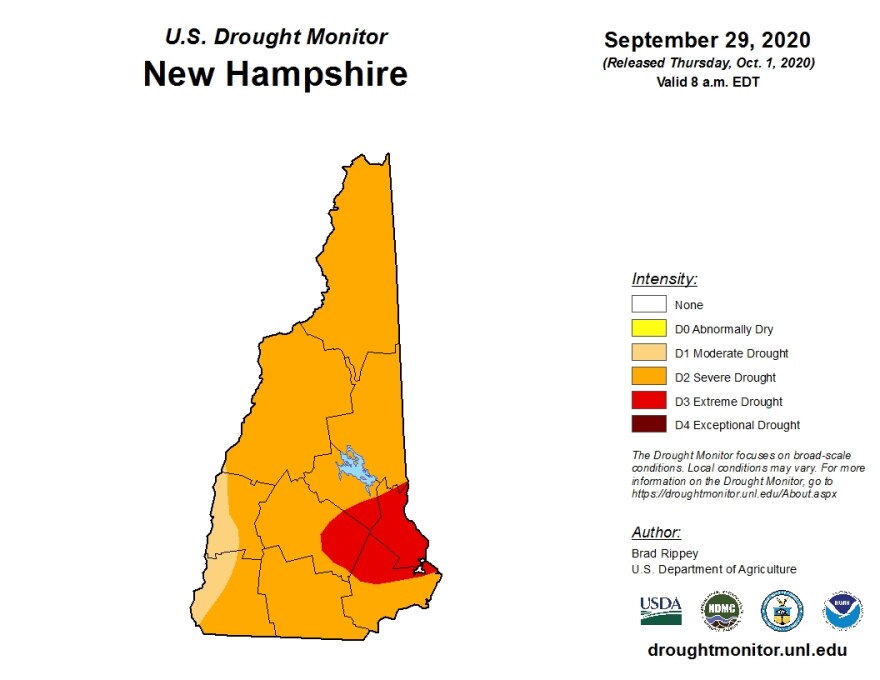More than 10 percent of New Hampshire is now in an extreme drought, with Lake Winnipesaukee and other reservoirs at record low levels and an increasing number of water wells running dry.
Get updates about the drought and other environmental news by signing up for our newsletter today.
The drought is at least severe almost all across New Hampshire and New England. It’s expected to last through fall or longer, without substantial rain in the forecast soon.
At the Department of Environmental Services drought team meeting Thursday, drinking water bureau chief Brandon Kernan said if residents aren't already cutting back their water use, they should be, especially in the nearly half of homes with private wells.
“We still have a few more weeks of the growing season in parts of the state,” Kernan said. “Really it’s your last chance to conserve that discretionary water usage, to really think about not watering your lawn, so that if the drought continues into winter, you’ll have done as much as you can to conserve your water supply.”
He said a few dozen residents have reported their private wells running dry using a DES survey. The final number will likely be much higher – Kernan says well drilling companies are reporting booming business and full schedules through as long as the end of the year.

Meanwhile, conditions are still primed for forest fires to spread. The state has taken the rare step of banning most campfires and brush fires, as well as smoking near public woodlands.
State forest ranger captain Doug Miner said Thursday there have been fewer fires covering less acreage so far this fall than they expected. But those they have extinguished have been unusually labor-intensive, because the fires burn so deep into the leaf litter and topsoil.
Miner says the state’s current weather and dryness are similar to what precipitated the 2017 Dilly Cliff Fire, which burned for more than a month in the White Mountains, and the 1947 fires that destroyed several towns in Maine and scorched thousands of acres in New Hampshire.
State officials say towns should confirm the status of any surface waters used in fire suppression. New Hampshire had record low rainfall in all but the last two days of September, and the dry ground had trouble absorbing the heavy bursts of rain that fell more recently.
This volatility, last winter's low snowpack and this summer's hot temperatures all reflect the trends of climate change and left New Hampshire primed for drought, according to state scientists.
It's also taken a toll on farmers. Officials say all 10 of the state’s counties have lost at least 30% of at least one crop, the threshold where certain aid programs kick in. They're encouraging residents to buy local food this fall and winter, to support farmers who have lost revenue due to the drought.








